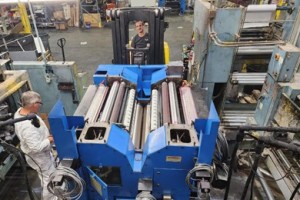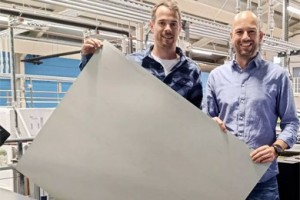Keeping 'up' with power failures
May 17, 2009 at 07:39 pm by Staff

What happens when a storm causes the power supply to flutter? Computer screens flash, resets trip and in press halls around the world, a web break is a likely result.
Less likely in ‘developed’ countries of the world ... but even in Australia, there are plenty of cases where the mains electrical supply is sufficiently unreliable to warrant generators: APN’s Yandina print centre – which has sufficient capacity to feed power back into the grid – is one case which comes to mind.
And paradoxically, as I write this piece, a storm coming in across the Tasman Sea has the lights dimming and phones clicking: I ‘save’ my text file, cross fingers and the computer stays alive ... this time.
I read later that in Sydney, traffic is piling up at junctions and emergency services are kept busy freeing people from lifts following multiple substation failures. And the emergency warning system’s gone down.
OK, we’re lucky that such instances (and worse) are infrequent. But not so in many regions of south east Asia and India, where the introduction of modern high-speed newspaper presses into less sophisticated infrastructure has brought problems.
Happily with the new kit comes the opportunity of a solution, leveraging current drive and control technology and the energy in a press, to avoid a sudden stop and web break.
Wifag’s Philippe Riegel says automatic press deceleration when a power failure occurs is a basic, low-cost protection function available to press users. Once the network is restored, the printing press can be restarted immediately without further delay.
More advanced technical solutions for tolerating electrical power failures are also available, but involve greater investment and operating costs.
“By installing an additional uninterruptible power supply unit (UPS) with kinetic energy storage (flywheel), it is possible to ride through short-term disturbances of the electrical network of up to three seconds without interrupting production,” Riegel says.
“At longer power failures, the press can be decelerated in a controlled manner without web breaks, or a diesel generator can be started automatically.”
Needs will vary according the local circumstances: While “long-lasting” power failures and breakdowns lasting minutes or even hours are rare in most parts of the world, short-term disturbances with temporary voltage interruptions, undervoltage, voltage surges and frequency disturbances are much more frequent.
And most of these last less than three seconds. Parts of Europe, North America and Asia suffer seasonal disturbances which can involve sequences of short disturbances within just a few hours.
“Even short disturbances can result in variable speed AC drives becoming inactive after 40-60 milliseconds,” says Riegel. “The electric motors then exert neither driving nor braking power.”
In a shaftless press, individually-driven cylinders and rollers will slow down in an unsynchronised manner: Folding cylinders and drive rollers in the folder tower usually come to standstill much faster than impression cylinders. And large diameter paper rolls have greater inertia than smaller ones. The result of course, is web breaks throughout the press which may take 20 minutes or so to replace.
Controlled deceleration systems capture the kinetic energy in slowing cylinders and rollers, and applying it through an electrical drive system augmented by additional equipment and software.
Driven cylinders and rollers which act on a web must be synchronised with it, but the drives of those which can be taken off the web can act as generators and deliver electrical energy.
Wifag and its drive partner AMK achieve this energy exchange between individual drives through a special coupling of the intermediate DC circuits of the individual electric drives via a common DC power line and semiconductor valves. Printing couple drives can only feed current to the power line, while drives on autopasters, drive rollers and folding cylinders can only draw current from it.
Large capacitors in the intermediate DC circuits are used to provide sufficient electrical energy storage for the first moment after the power failure (the first 20 to 30 milliseconds), and intermediate circuits operate with high voltages of about 720 volts (to a maximum of 850 volts).
Impression cylinders come off, and are slowed down by their drives until the usable kinetic energy is exhausted and the press comes to a standstill.
Wifag is installing a kinetic UPS system from Active Power with the Evolution 371 press at the ‘Naples Daily News’ in Florida, USA. This has a rated electric power of 1200 kVA and includes four flywheel modules with a total maximum kinetic energy of 15 MWs.
A network disturbance of up to three seconds will be tolerated without any effect on production speed, and beyond that the press will be decelerated automatically.
More advanced protection is available through the (more expensive) option of installing an uninterruptible power supply with the kinetic UPS riding through the period needed for starting the diesel generator and accelerating it to operating speed, typically about six seconds.
But while this level power supply security typically has a high price, kinetic UPS can make a big difference to the impact of what may be routine interruptions.
Sections:
Newspaper production













Comments